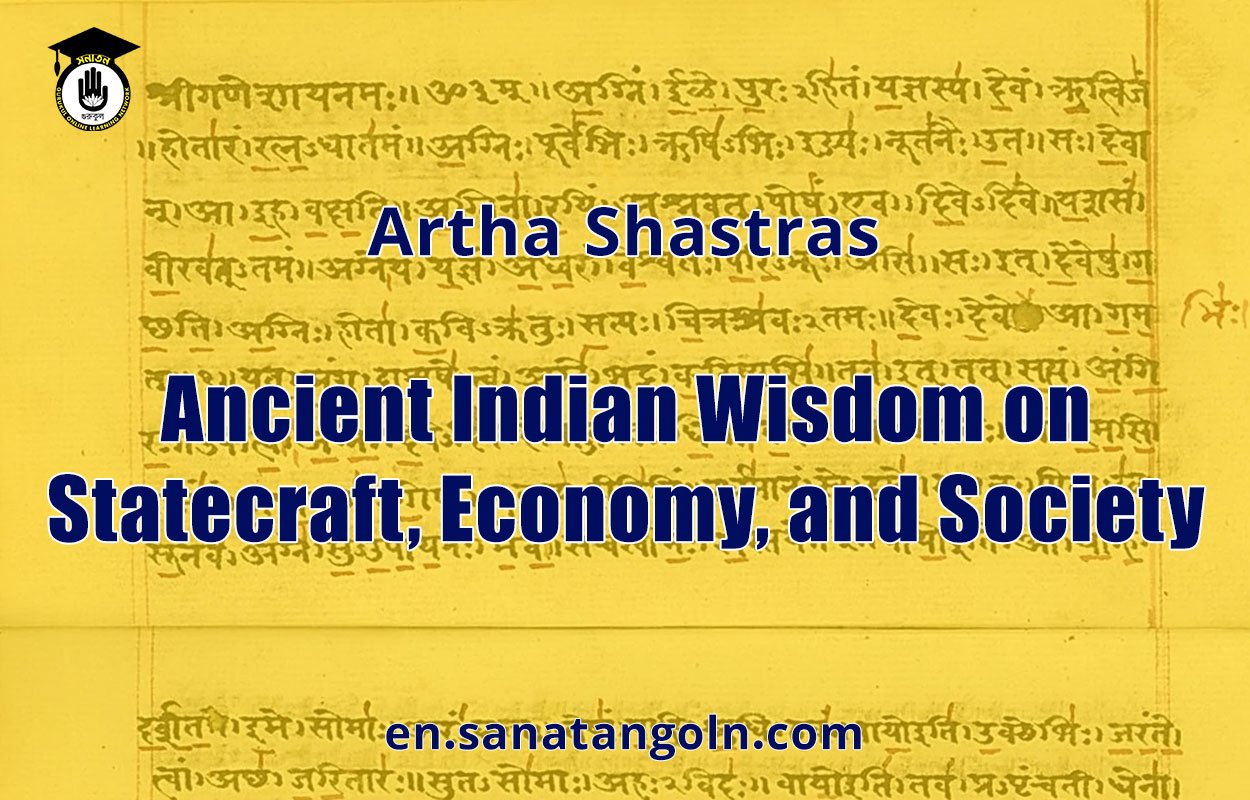The term ‘Artha Shastra’ is of significant importance in the annals of Indian ancient wisdom, denoting the science and art of politics, economics, and statecraft. Rooted in India’s classical heritage, the Artha Shastras encompass a diverse range of texts that have deeply influenced the socio-political and economic fabric of the subcontinent for centuries. This article delves into the essence, significance, and legacy of the Artha Shastras, setting forth an understanding of the intricate world of ancient Indian political thought and its implications for today.
Origins and Meaning of ‘Artha Shastra’
The Sanskrit term ‘Artha’ translates to ‘material prosperity’ or ‘wealth’, whereas ‘Shastra’ means ‘science’ or ‘discipline’. When put together, ‘Artha Shastra’ essentially refers to the science of material well-being or the principles governing material success. In the broader scope, it covers topics related to statecraft, law, military strategy, economics, and administrative organization.
The Magnum Opus: Kautilya’s Arthashastra
While the Artha Shastras encompass various texts, the most renowned among them is the Arthashastra by Kautilya, also known as Chanakya or Vishnugupta. This exhaustive treatise, dating back to the 4th century BCE, is often equated to the works of western thinkers like Machiavelli, primarily due to its pragmatic and sometimes controversial advice on governance and diplomacy.
Structure and Content: Kautilya’s Arthashastra comprises 15 books that offer meticulous details about a range of subjects:
- Kingdom and its Components: This book outlines the various elements that constitute a state, including the ruler, ministers, country, fort, treasury, and allies.
- Duties of Government Officials: Kautilya presents a detailed bureaucratic setup with specified roles for different officials.
- Law and Justice: Discusses legal procedures, types of evidence, and judicial duties.
- Management of Finances: Details on revenue collection, treasury management, and state expenditure.
- Hiring of Ministers and Officials: Describes the qualifications, duties, and code of conduct for ministers.
- Internal and External Threats: Discussion about potential dangers to the state and how to address them.
- Discipline and Control: Advises on controlling the bureaucracy and maintaining discipline among officials.
- Vices and their Control: Elaborates on controlling immoral and unethical behavior.
- Attack and War: Delivers strategies on warfare, attacking enemies, and managing sieges.
- Foreign Policy: Presents the concept of the ‘Circle of States’ and offers guidance on managing relations with neighboring states.
- Defence and Fortifications: Discusses the design of forts and defensive measures.
- Espionage: Emphasizes the importance of spies in governance and details their roles.
- Royal Duties: Enumerates the daily routine, duties, and responsibilities of the ruler.
- Strategy: Offers insights into strategic thinking, planning, and the application of strategies.
- Plan for the Times: Advises rulers on actions to take during times of adversity and prosperity.
Kautilya’s approach is holistic, blending moral-ethical considerations with practical-political realities. He suggests a welfare state where the ruler is the guardian of his subjects, but also emphasizes realpolitik, advocating for pragmatism in diplomacy and war.
Other Artha Shastras
Though Kautilya’s Arthashastra remains the most celebrated, various other texts fall under the Artha Shastra tradition. Works like the ‘Kamandakiya Nitisara’, ‘Sukraniti’, and ‘Brihaspati Sutra’ also discuss statecraft, governance, and economic principles. Each of these works has its unique emphasis and perspective, contributing to the rich tapestry of Indian political thought.
Relevance of Artha Shastras Today
In the modern era, the principles of the Artha Shastras continue to be of relevance:
- Governance and Administration: The structured administrative divisions and well-defined roles for officials in the Arthashastra can offer insights into bureaucratic efficiency and governance models.
- Economic Policies: Kautilya’s emphasis on fair trade, agricultural productivity, and infrastructure development is analogous to modern economic principles.
- Diplomacy and Foreign Relations: The ‘Circle of States’ theory, which describes how a nation should interact with its neighbors based on their position and power, has implications in contemporary geopolitics.
- Espionage and Intelligence: The importance given to spies and intelligence gathering resonates with today’s intelligence agencies and their pivotal role in national security.
- Moral Governance: Despite its pragmatism, the Arthashastra also emphasizes the moral duties of a ruler, underscoring the importance of ethical governance, which is as crucial today as it was in the past.
Conclusion
The Artha Shastras, with Kautilya’s Arthashastra at the forefront, represent a pinnacle of ancient Indian thought on statecraft, economics, and society. These texts, embedded with wisdom, provide a window into the administrative acumen, strategic thinking, and visionary planning of ancient Indian scholars. As the world becomes increasingly complex, the time-tested principles of the Artha Shastras can offer insights, guidance, and inspiration to modern leaders and policymakers, proving that ancient wisdom often remains evergreen in its relevance.
